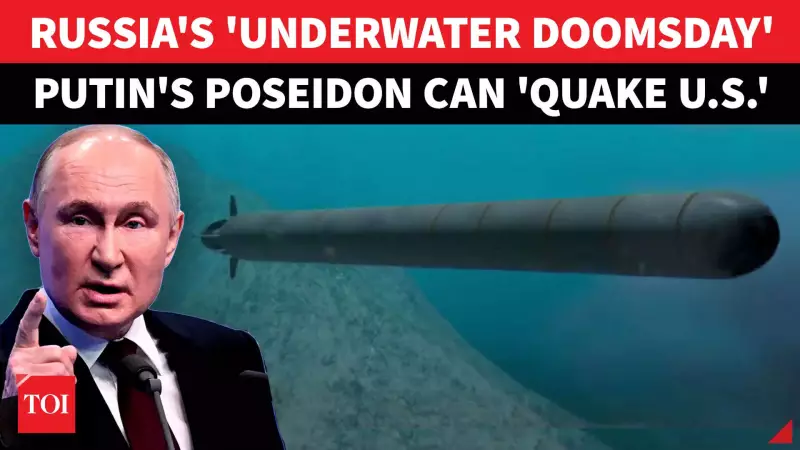
In a startling revelation that has sent shockwaves through international security circles, Russia's underwater nuclear weapon system, codenamed 'Poseidon,' emerges as one of the most formidable threats in modern warfare. This terrifying super-weapon represents a new class of strategic deterrence that could fundamentally change global power dynamics.
What Exactly is the Poseidon System?
Poseidon is not your typical nuclear weapon. It's an autonomous, nuclear-powered underwater drone designed to operate at extreme depths and travel thousands of kilometers undetected. Think of it as a cross between a torpedo and a submarine—but with nuclear capabilities that dwarf conventional weapons.
The Tsunami Threat: How Poseidon Targets Coastal Cities
The most chilling aspect of Poseidon is its alleged ability to trigger massive, radioactive tsunamis. By detonating a nuclear warhead near enemy coastlines, the weapon could create waves hundreds of feet high, capable of wiping out entire coastal cities and rendering them uninhabitable for decades due to radioactive contamination.
Why Poseidon Keeps Military Experts Awake at Night
Several factors make Poseidon particularly concerning for defense analysts:
- Near-impossible detection: Operating at extreme depths makes traditional anti-submarine warfare ineffective
- Unprecedented range: Nuclear propulsion allows virtually unlimited operational range
- Radioactive fallout: The combination of blast damage and long-term contamination creates a dual threat
- Autonomous operation: Reduced human control increases the risk of accidental deployment
Strategic Implications for US-Russia Relations
The development of Poseidon comes at a time of heightened tensions between nuclear powers. Military analysts suggest this weapon is designed to circumvent US missile defense systems, creating a new vulnerability that current defense infrastructure cannot adequately address.
As global powers continue to develop increasingly sophisticated weapons systems, Poseidon represents a dangerous escalation in underwater warfare capabilities. The international community watches with concern as this new chapter in nuclear deterrence unfolds, potentially reshaping security paradigms for decades to come.





